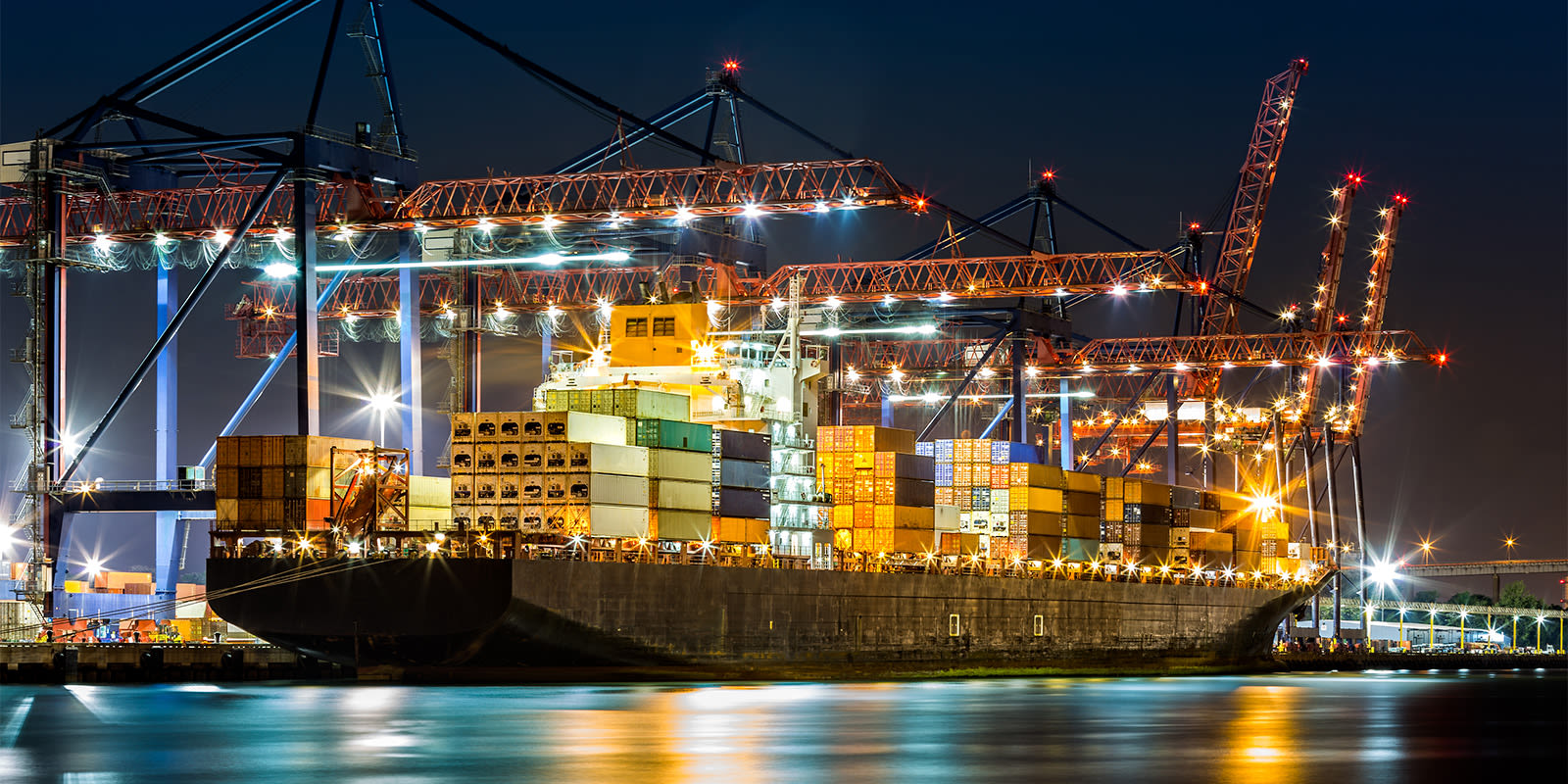
November 30, 2021
Jumping Ship: When to Change Ports to Skip Congestion
Tags:
Jumping Ship: When to Change Ports to Skip Congestion

November 30, 2021
When port congestion rattles supply chains, any chance to reclaim control can seem welcome. It may be tempting to try a different port or test alternate shipping routes. What if you could shave days off transit time—or, at least, gain predictability?
Here, Flexport Director of Ocean Trade Lane Management Nathan Strang explains when changing ports is a smart pivot and when it’s a strategic pitfall.
Is It Worth It to Try a New Route?
“We can help design your routing to balance cost and speed, based on the current advice for your trade lane,” shares Strang, “but, typically, we recommend adjusting your timelines to market conditions before we recommend reconfiguring routes.”
That’s because change can add complexity, and alternate route options are meant to mitigate risk, not increase it. With that in mind, Strang offers a few guardrails to guide your decisions:
A congested port is still sometimes the fastest choice.
Weigh delays versus distance. For instance, you could ship to Los Angeles and bite your nails through two or more weeks of waiting for your container to unload, but cargo still might arrive at your warehouse sooner than if you sail to the East Coast and truck across the US.
Visibility can help mitigate the impact of volatility.
Real-time cargo tracking makes it easier to adjust your supply chain downstream. A broader, deeper view could help keep your goods moving more reliably than any logistics hopscotch.
Join the Waitlist: With Flexport Visibility, you can track shipments in the Flexport Platform, even if you ship with other forwarders or directly with carriers.
Alternate routes can be more expensive.
For some companies, a quick inventory infusion could be more important than cost. Or schedule reliability might be paramount, especially if it means staying on good terms with key partners.
In these situations, it would make sense to explore alternate routes.
Stabilizing Unpredictability
Here’s a common scenario: Port congestion makes it hard to time the arrival of goods and manage inventory levels.
Haphazard attempts at making up for delays cut into profits, so now it’s hard to determine appropriate consumer pricing, too. You risk losing sales and eroding customer trust.
Strang has a strategy for this. He suggests importers diversify routing to improve predictability. As an example, a company with distribution centers in the Midwest might try something like this:
- Ship lower priority replenishment stock to Los Angeles and truck inland for cost-effectiveness. If port congestion slows these SKUs, it’s not catastrophic.
- Higher priority goods might ship to the East Coast and truck inland. This route might not always be faster than going to LA, but sometimes it is. More importantly, it’s more predictable.
- Other high priority goods might go to Seattle or Portland and truck inland. This still prioritizes predictability and ensures a single port can’t stall an entire supply chain.
Looks like good news, but is it? If we look at the US West Coast, congestion appears to be showing signs of dissipating. Since approximately 40% of imports enter the US through Los Angeles and Long Beach, developments here could indicate future trends.
At these two ports, the number of ships at anchor dipped below 60 on Black Friday, after cresting above 80 in the first part of November. But with so many other factors in play, this one metric might not mean what we wish it did.
For new product introductions, Strang recommends companies ship critical SKUs by air for the fastest arrivals. The cost of air freight is offset by the predictability: No one wants to pay to reschedule a launch.
Getting Goods on the Water
Another common scenario amid congestion: You can’t get your goods onto a vessel.
You may have a fixed-price contract with a carrier, but without available capacity, you may need to look for other outlets to move cargo. Waiting on normal capacity to open up means you could miss crucial dates with retail partners.
In this situation, Strang looks for extra loaders into lower demand ports.
Extra loaders are additional vessels that carriers schedule to handle overflow volumes. They may not go directly to Los Angeles, but they’ll get you across the Pacific, and these other ports may have easier access to trucking and rail services.
Getting space on an extra loader requires agility. Since they usually only take between 500 and 1000 containers total, they tend to fill up very quickly.
“Data integrity helps us jump on extra-loader opportunities,” explains Strang. “When we know which SKUs are where, and why they need to move, based on terms with your suppliers, we can help you find the right type of capacity to clear backlogs.”
Changing Course with Caution
When alternate routes feel more like roulette than a sure bet, Strang has a few more solutions to help ease the way:
- Ship excess inventory, so you have enough to sell and to bridge any gaps while you transition into alternate route options.
- Transition slowly. That way, you can limit risk while waiting out any additional market shifts.
- Turn to air freight to fill critical shortfalls in inventory.
For additional help moving cargo during times of congestion, reach out to your client solutions team.
About the Author

November 30, 2021


